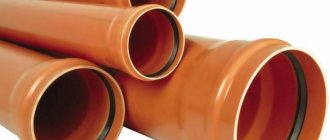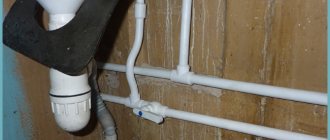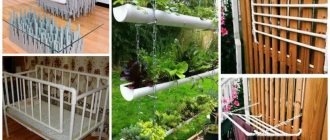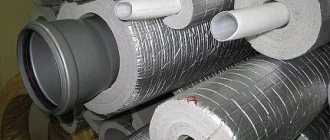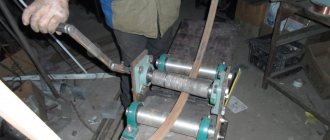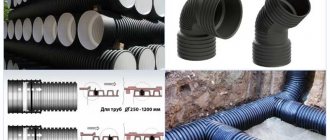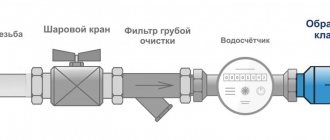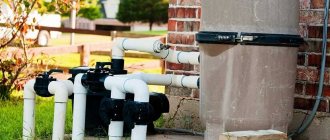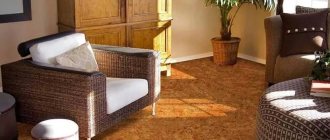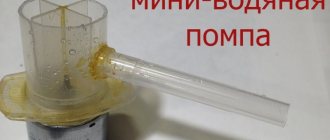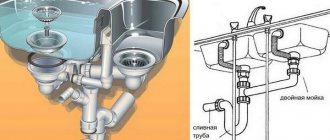Today, plastic pipes for water supply are presented in a wide range. Each variety has its own differences, advantages and disadvantages. They will be discussed in the article. We will also tell you how communications are assembled and how the size of pipes for their installation is determined. After reading the material, it will become clear what to look for when buying plastic pipes.
Plastic pipes for assembling communications Source plastic-solutions.ru
The situation on the industry market in the Russian Federation
This type of business in Russia is systematically developing, winning positions from foreign suppliers. This happens, on the one hand, due to an increase in demand for products, on the other, due to an increase in the volume of production of polymer raw materials.
The most popular among consumers are pressure plastic pipes, which account for about 60% of the market, followed by non-pressure (19%) and corrugated (21%) modifications. Most of the existing manufacturers are focused on the production of large-diameter polyethylene pipes for the installation of water and gas supply systems. There is maximum competition in this segment, and there are practically no products from foreign suppliers.
The main competition for the young enterprise will be such giants as Cheboksary Pipe, Poliplastik Group, Tekhstroy, Pro Aqua, DKS, Politek, PC Kontur, Hemkor and Pyplaf.
Also, do not forget about smaller manufacturers who entered the arena earlier and have already managed to redirect some consumers to themselves. When opening a production facility, you must immediately focus on the search and implementation of innovative technologies, the production of products with unique properties and high-quality service. It is natural that the above will require the purchase of expensive equipment and the involvement of specialists.
Metal-plastic
The metal-plastic version (PEX-Al-PEX) is a layer cake made of inner and outer layers of polyethylene, between which aluminum foil is sandwiched. These products are more intended for heating systems. But it is quite possible to make a water supply system from such a pipe. It will just be quite expensive.
The main disadvantage of metal-plastic lies in its multilayer structure. Due to the presence of an aluminum layer, such a pipe is more difficult to solder. Plus, over time, these layers can separate from each other.
Product range
Four main types of products are actively used in various fields:
- Polyethylene (PE). They are used for organizing water supply (including drinking water) and wastewater disposal, produced in lengths of 12 m or more, with a diameter of 16-160 mm, making it possible to produce solutions for systems with different pressures (LDPE, PESD, HDPE). Manufacturing will require high-tech lines, relatively inexpensive polymer granules and packaging materials.
- Polypropylene (PP). They are in demand when organizing heating and technological installations. They have a multi-layer structure and a high rigidity class. Produced with a diameter of 20-110 mm in lengths of 200 to 400 mm.
- Polyvinyl chloride (PVC). Non-pressure pipe products are used for the installation of underground pipelines, sewer systems, transportation of gaseous media with a temperature not exceeding 45°C, as well as in construction. It is resistant to low temperatures and durable. Available in orange or white with a diameter of 110-630 mm in pieces up to 1200 mm long.
- Metal-plastic (MP). Most often they are installed in private houses and apartments. They are easy to install, but at the same time they break quite quickly due to mechanical deformation and significant temperature changes.
Products are marked depending on their purpose: cold water supply - blue, hot pipelines, heating systems - white, pipes for heated floors - red, gas supply - yellow.
The cost of plastic pipes is calculated based on their design features. Length, diameter, number of layers, thickness and wall material matter.
Polypropylene
Polypropylene pipes for water supply have the highest operating temperature among plastic analogues (up to +700C). However, this plastic does not tolerate frost well and can crack when cooled below zero. In a house or apartment, a pipeline made from it will last for many years, but this option is not suitable for installation on the street.
Application of polypropylene pipes
When comparing pipes made of HDPE, PVC and polypropylene by price with the same internal diameter and equal length, the latter turns out to be the most expensive among them. But it has better almost all characteristics. Plus, fittings for polypropylene products are several times cheaper than those designed for polyvinyl chloride or polyethylene pipes. As a result, the final cost of plumbing in most cases is cheaper.
Raw materials to support production
For a continuous production cycle, a stable supply of raw materials should be established. It consists of polymers (polyethylene, polybutylene, polyamide, polyvinyl chloride, polypropylene), which are supplied in granular form. The packaging must necessarily indicate the name of the product, its type, expiration date, manufacturer and other data that allows obtaining information about the raw materials. The manufacturer is required to provide product certificates.
Important: high-tech pipes can be obtained exclusively from primary processing granules (on average 80 rubles/kg). The use of recycled materials (on average 30-40 rubles/kg) is allowed only for low-pressure pipes (LDPE).
It is better to enter into a supply agreement with large manufacturers of polymer granules. In the domestic segment, these are RosEcoPlast LLC, Polymer Club LLC, AST Promplast LLC, TPK GlavTehProm, TD Plas LLC and a number of others. To simplify logistics, you should look for a partner in your region. However, offers from companies in remote areas can be no less profitable.
Plastic pipe manufacturing technology
The technological cycle is based on the extrusion of polymers using special devices - extruders. There are several types of such units:
- Screw. They function similarly to a juicer, being the most common.
- Screwless. The molten mass is processed through a disk organ. Such mechanisms are used for the manufacture of products from polymer mixtures.
- Combined. As the name implies, the equipment consists of both of the above units.
Production is carried out according to the principle of a continuous closed cycle. The raw materials prepared and tested in the laboratory are fed into a receiving funnel with a dosimeter. From there, in the required portions, into the extruder. Here, under the action of ring heaters, the granules are gradually heated to a state of fluidity. The molten mass is mixed by a screw and moves to the extruder head. At the outlet of it, a filter is installed that traps excess inclusions and dirt (this is necessary to ensure uniformity of the walls).
The formation of the product body occurs in the extruder head under pressure. Next, the workpiece is moved to the vacuum calibration compartment, where the outer diameter of the pipe is formed, its wall thickness is calibrated, and primary cooling is performed. After this, the product passes through several cooling chambers until it reaches ambient temperature. The movement of pipe blanks is carried out using a caterpillar pulling mechanism. At the final section of the line, a guillotine with a meter counter is installed, cutting the solid pipe into pieces of a specified length. All processes are controlled by high-precision automation.
Finished products are marked (a separate mechanism is provided for this), packaged and sent to the warehouse. The type of packaging depends on the diameter of the pipe.
An important aspect of production is quality control. Control samples from each batch are checked in laboratory conditions for compliance with standards regarding geometric dimensions (outer diameter, wall thickness, circumference, length of segments). If the control is successfully passed, a document certifying the quality of the product is issued.
There are also certain requirements for the order in which pipes are stored. Before being sent to the consumer, they should be kept in covered warehouses, protected from direct daylight, in a horizontal position. The warehouse storage period should not exceed one year, and products should be sold no later than 2 years from the date of manufacture.
Packed and protected with plugs at both ends, pipes can be transported by various vehicles with a covered body.
Transportation and storage rules
When transporting and storing PVC pipes, certain rules must be followed:
- They should not be exposed to large temperature changes and condensation. Storage within -30…+50 °C is acceptable.
- Due to the negative effects of ultraviolet rays, it is undesirable to store without packaging in places not protected from exposure to the sun.
- It is mandatory to have safety plugs at the ends of the pipes.
- It is necessary to transport PVC products in strict accordance with the instructions for transporting such goods. If there is no factory packaging, it is necessary to place wooden spacers up to one meter.
- Contact of product surfaces with metal objects is unacceptable; this can significantly reduce their wear resistance due to possible minor damage.
Equipment for the production of plastic pipes
Modern production lines are a complex of sequentially located units and components. Their total length can be 18-60 meters, depending on the characteristics of the technological cycle. Almost all processes are automated, and personnel participation is required only at the stages of loading raw materials and removing finished products. Separately, employees are required to monitor processes and ensure correct operation of mechanisms.
The equipment set includes:
- a hopper for receiving raw materials with a dispenser (in some cases it is replaced with a funnel, and the required number of granules is measured manually);
- an extruder of one type or another with a filter device;
- a pipe head with a set of dies for forming pipes of various shapes and cross-sections;
- laser controllers for monitoring product parameters;
- pulling mechanism with speed regulator;
- baths (water and vacuum-water) made of stainless steel with pumps for cooling;
- installation for cutting pipes into pieces;
- marking mechanism;
- packaging machine.
In addition to those listed, additional devices may be required. For example, a winder for small-diameter PE pipes or a line for the production of corrugated products.
Example of line operation:
Production of corrugated plastic pipes
The process of manufacturing pipes of this type resembles the technology described above, with the difference that the equipment includes an additional device - a corrugator. This mechanism is made in the form of two halves with a channel for the flow of coolant liquid, located near the extruder head.
From the extruder, the workpiece is moved into a matrix formed by closed mold halves, compressed under pressure to a given shape and hardened, forming a corrugation. After this, the finished pipes are wound into coils. In addition, there are no cooling baths. And the cooling itself takes place in the corrugator.
On average, the cost of a line for the production of corrugated pipes with a power of 6.5 kW and a size of 9x2x2.5 m will be 2.8-3 million rubles. Most models make it possible to produce products with a cross-section of 16-63 mm.
Production room
To locate the enterprise, you will need a building with a workshop, the area of which corresponds to the dimensions of the production line, plus warehouses for storing raw materials and finished products, office and household areas. The building must contain all the necessary communications and convenient access roads for large vehicles. Ceiling height – at least 4 m.
A separate requirement is the ability to control humidity levels. Exceeding this parameter negatively affects the quality of the finished product.
Product certification
In order to confirm compliance of product parameters with reliability and safety requirements, it is necessary to obtain a GOST certificate of conformity for plastic pipes (Federal Law “On Technical Regulation”). Bodies accredited to issue relevant certificates have the right to carry out the procedure.
Examples:
- GOST R 32415-2013 “Thermoplastic pressure pipes and connecting parts for them for water supply and heating systems. General specifications".
- GOST 18599-2001 “Polyethylene pressure pipes. THAT".
During the inspection, plastic pipes are tested for resistance to gases, temperature changes, hydrostatic pressure, tensile deformation, and maximum load values. By the time the certification procedure begins, the entrepreneur must have samples made on his own equipment (you can order the production of samples from the equipment supplier).
Scheme for obtaining a certificate of conformity
Some types of PVC pipes are subject to mandatory certification. This process is regulated by more than 20 state standards. Those types of products that are not subject to mandatory certification undergo the procedure at the request of the company that opened production. This improves the company’s image and makes it possible to participate in serious tenders for the purchase of materials in the B2B sector.
First, an application is completed. Next, a complete package of documentation and a correctly completed application is submitted to the accredited certification body. This documentation includes:
- Statement.
- Extract from the company's statutory documents (TIN, OGRN, OKVED codes).
- Basic regulatory and technical documentation (GOST, TU).
- Detailed description of the product (material, article number, scope of application).
- Sometimes they require a certificate of the manufacturer’s personnel.
Each region has a state center for metrology and certification. Initially, it is better to contact them: they will provide you with the entire list of actions. Product samples undergo laboratory tests. Their results are assessed by experts, and a corresponding certificate is issued.
Investment size
To open production you will need about 8-10 million rubles. This will include costs for the purchase and commissioning of equipment (2-5 million rubles), registration of an enterprise, development of technological maps, rental of premises and salary fund for six months, purchase of raw materials, repair work and connection of communications, purchase of freight vehicles, additional mechanisms and consumables, as well as unforeseen expenses.
The calculation of profitability is based on the production capacity of the enterprise, product range, and the presence of stable sales markets.
Recruitment
To organize the production of PVC pipes, it is necessary to load the equipment to the maximum in order to increase profitability. Therefore, it is advisable to calculate labor costs and staff staff on the basis of two- or even three-shift work. The LPT line 63 20×110 considered in the example of calculating profitability can be serviced by a staff of two employees.
One of them should preferably have the knowledge and skills of an adjuster and have the appropriate approvals. Thus, if you count on two shifts, you need to hire four people.
To provide the workshop with orders, it is advisable to organize a sales and marketing department. Activation in this direction allows us to cover a larger market share and attract the attention of customers from other regions. Even one employee in such a department can provide the plant with orders and free up the manager’s time to resolve many issues.
